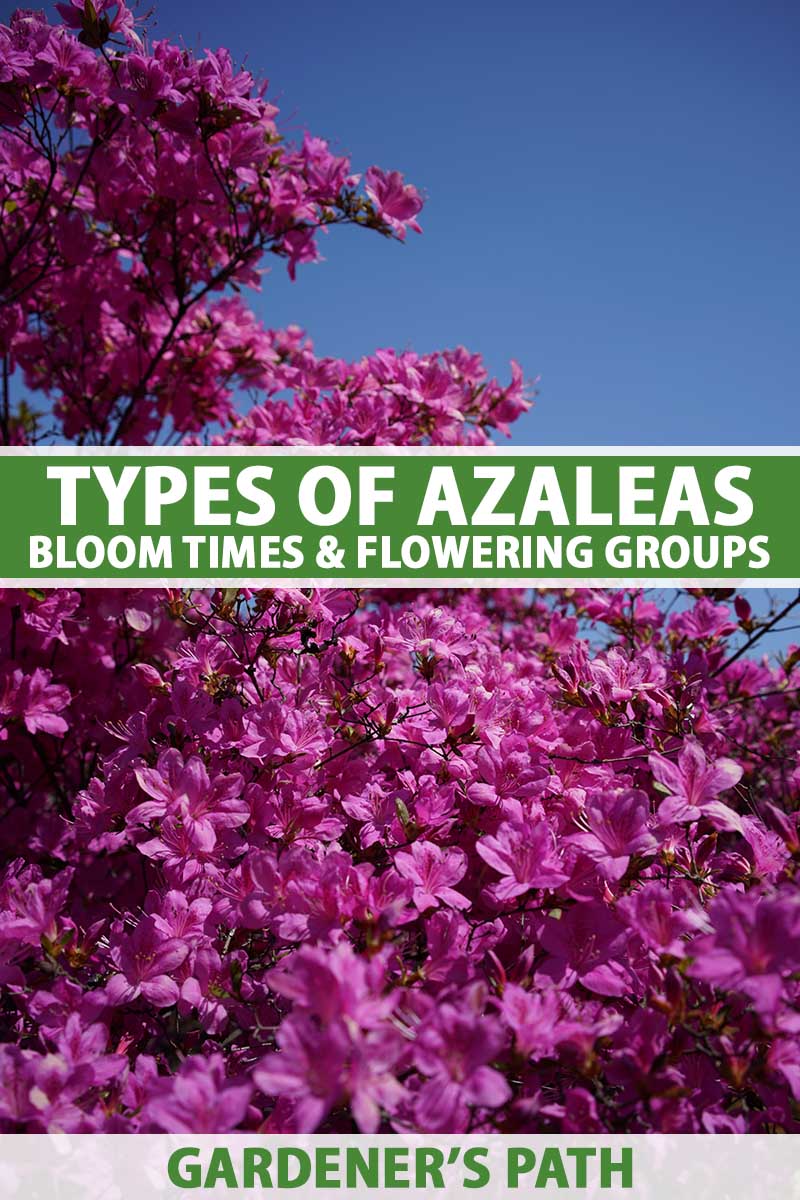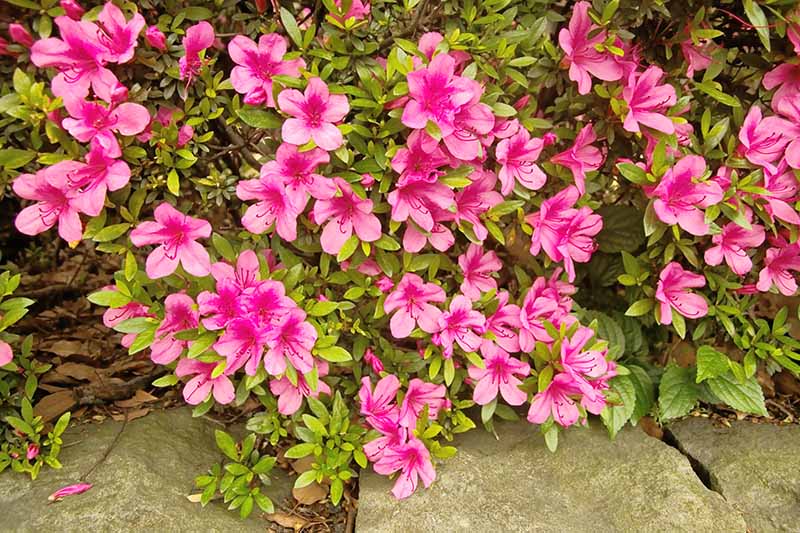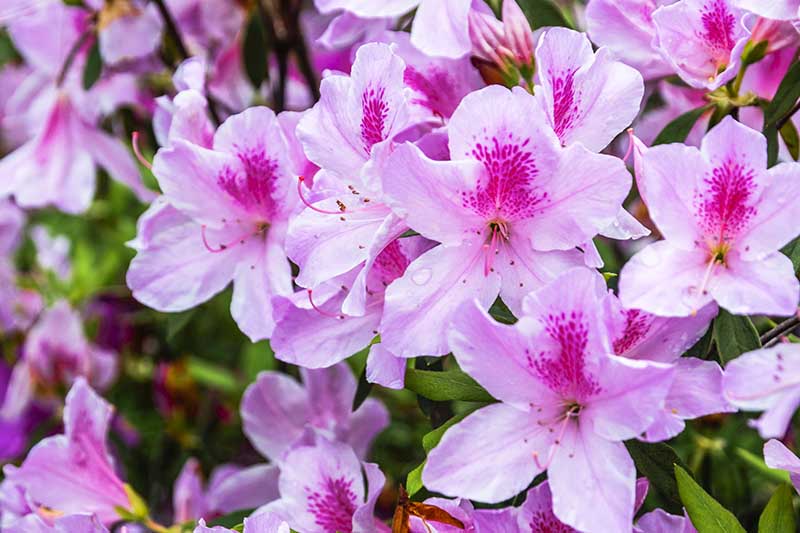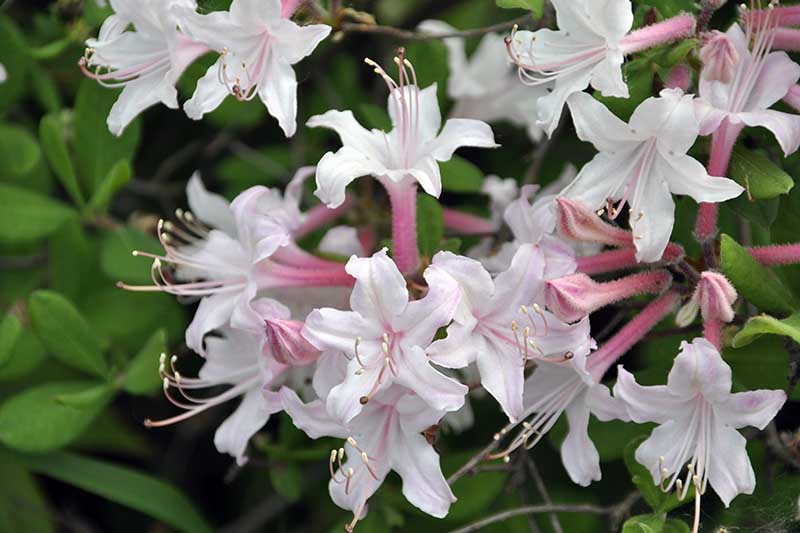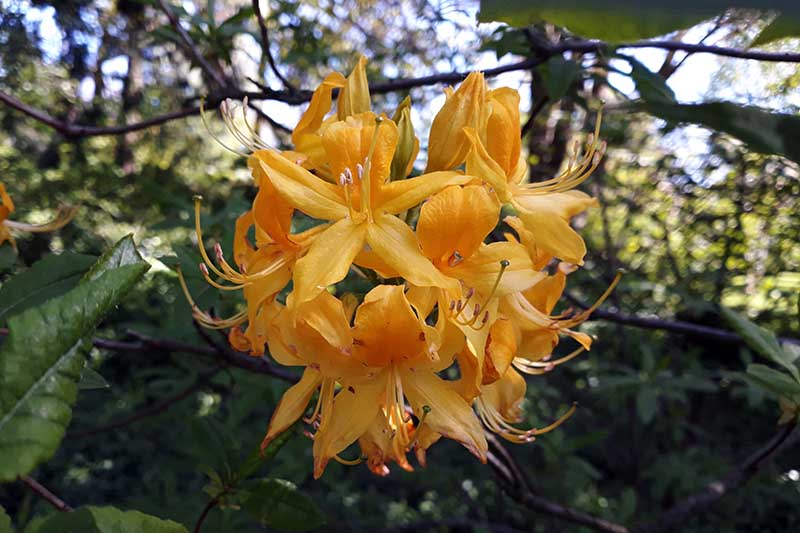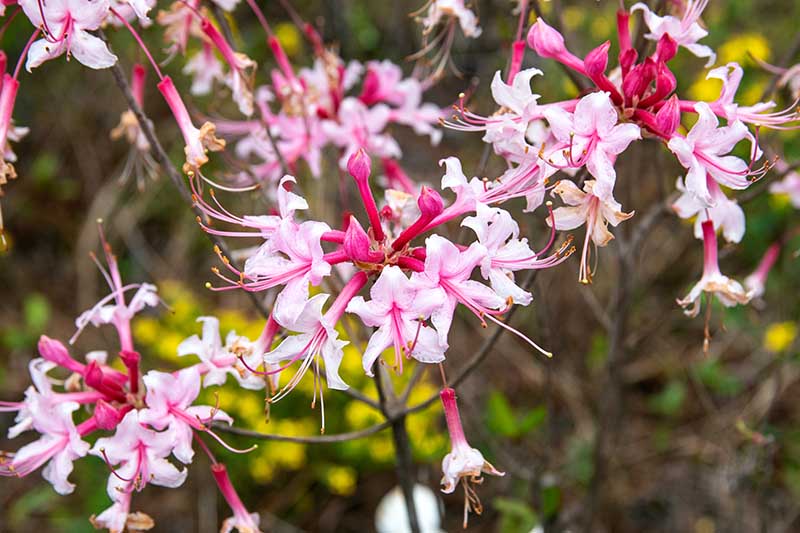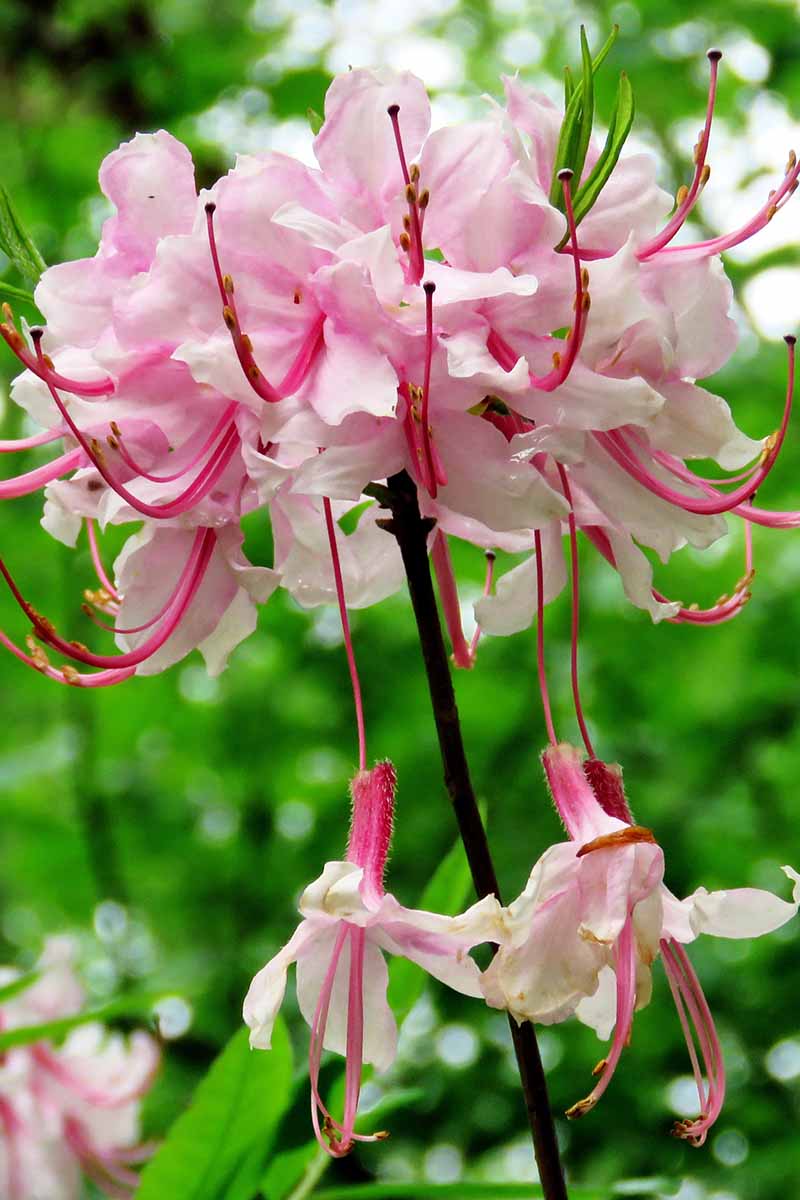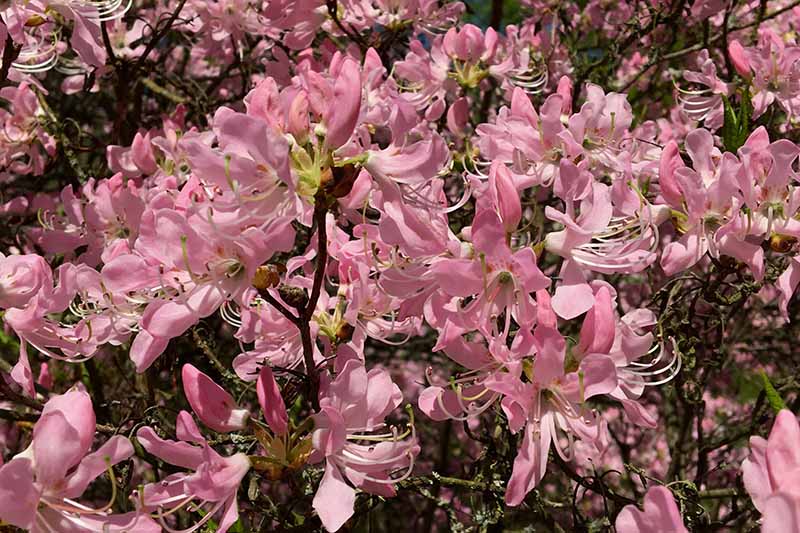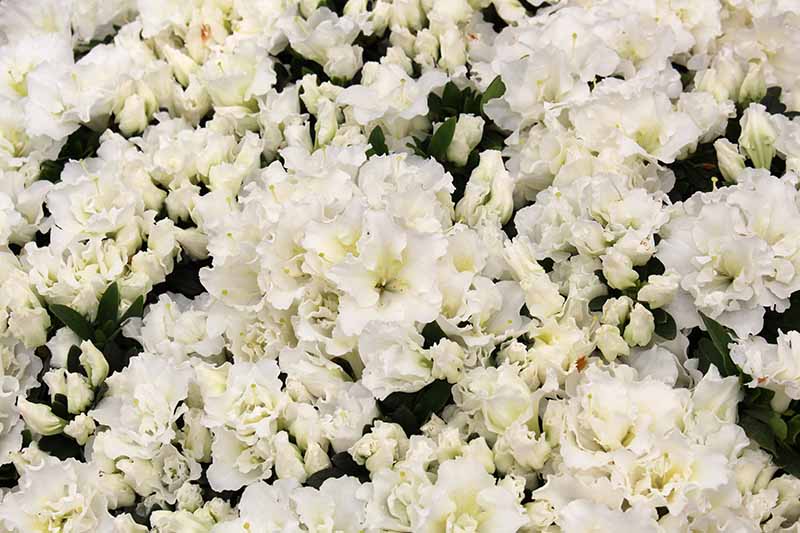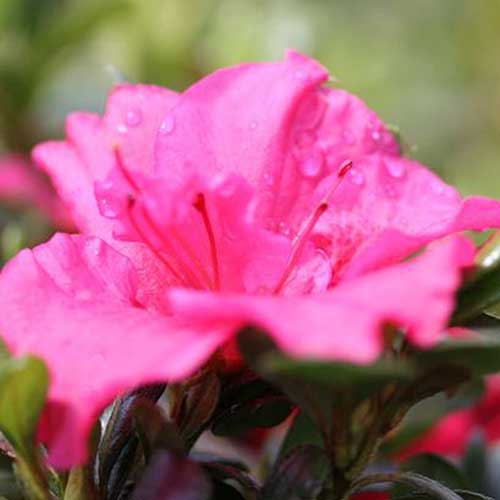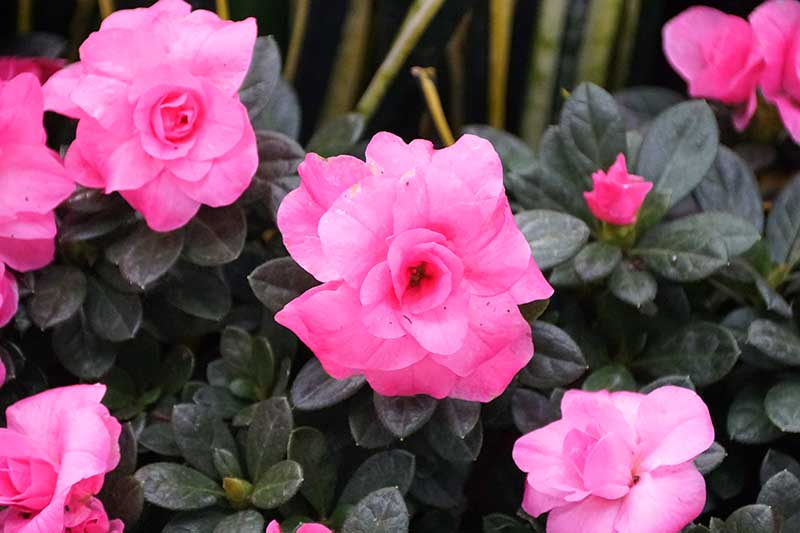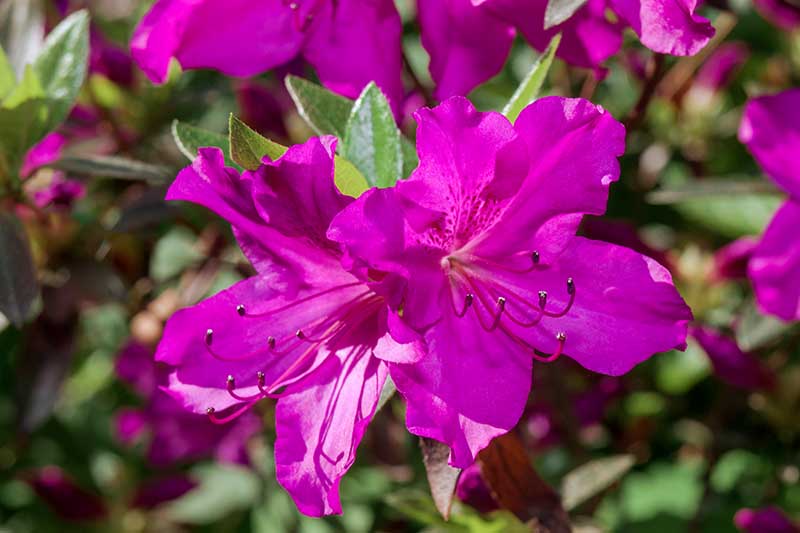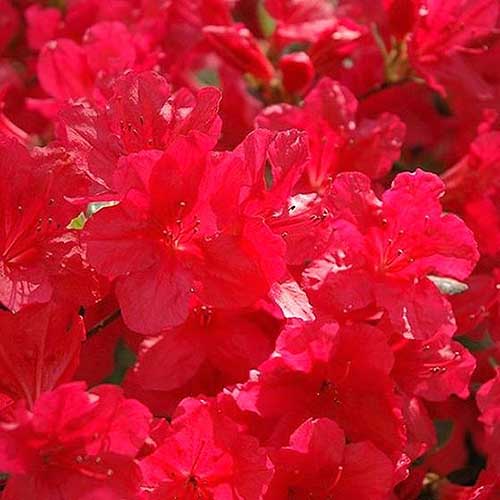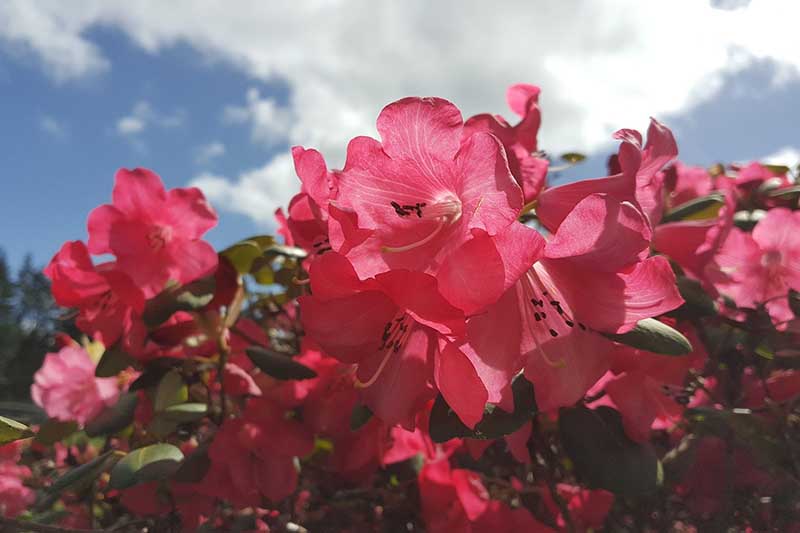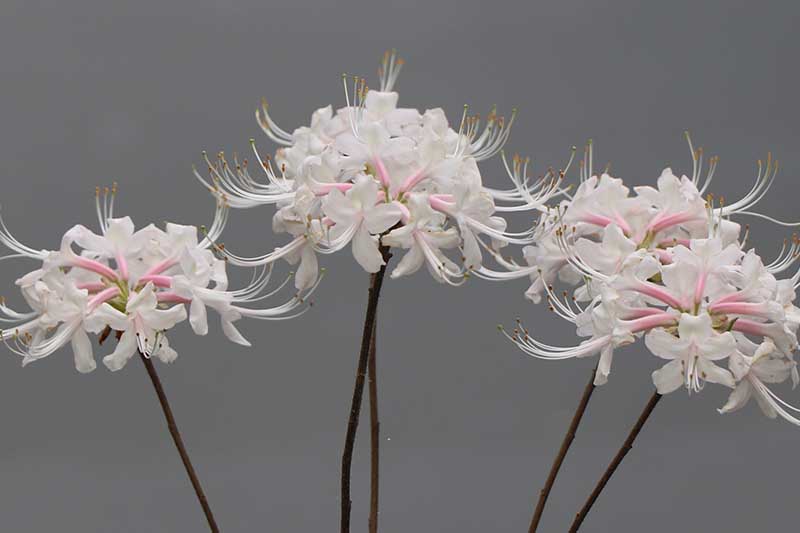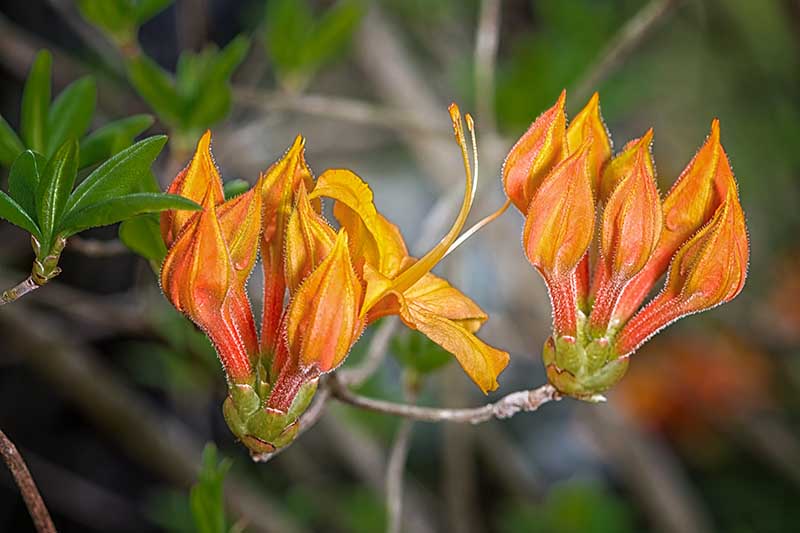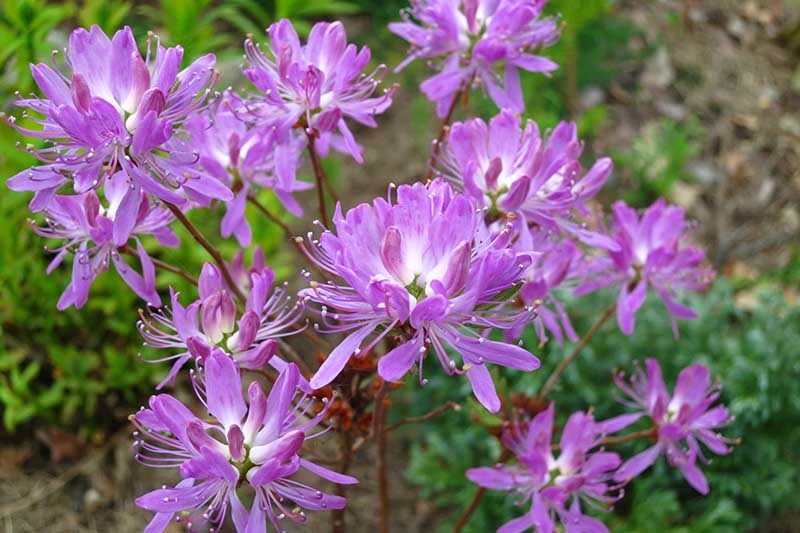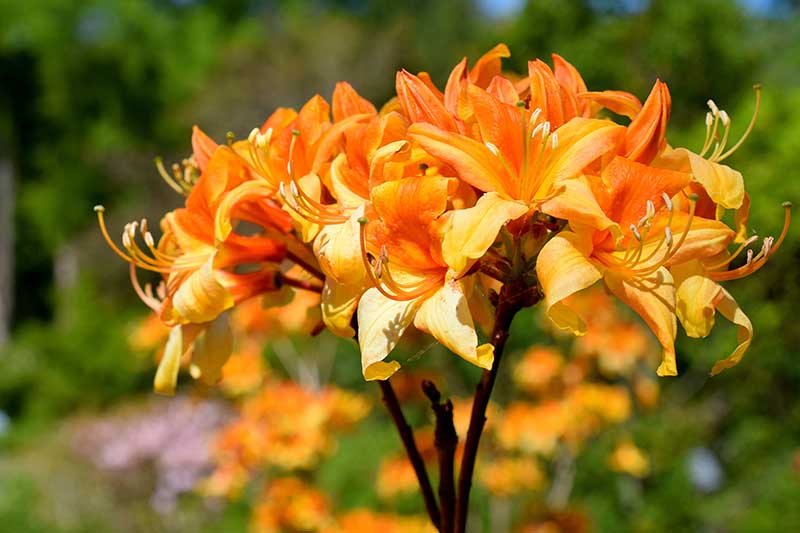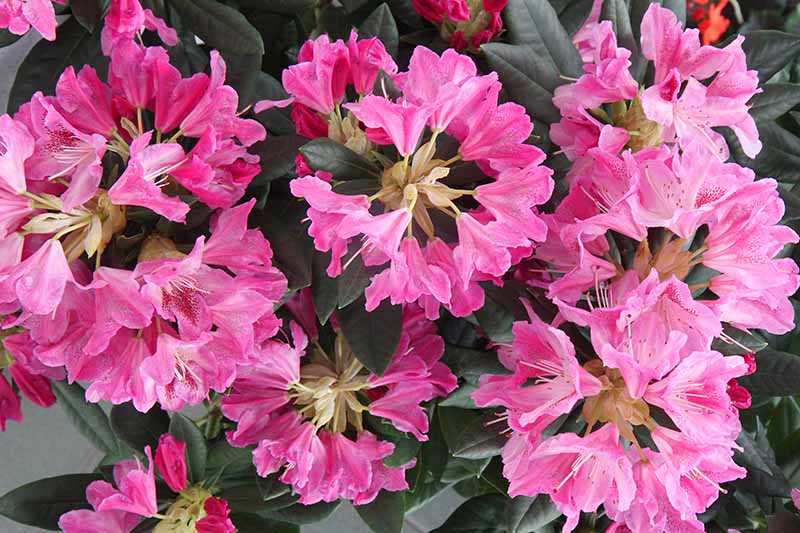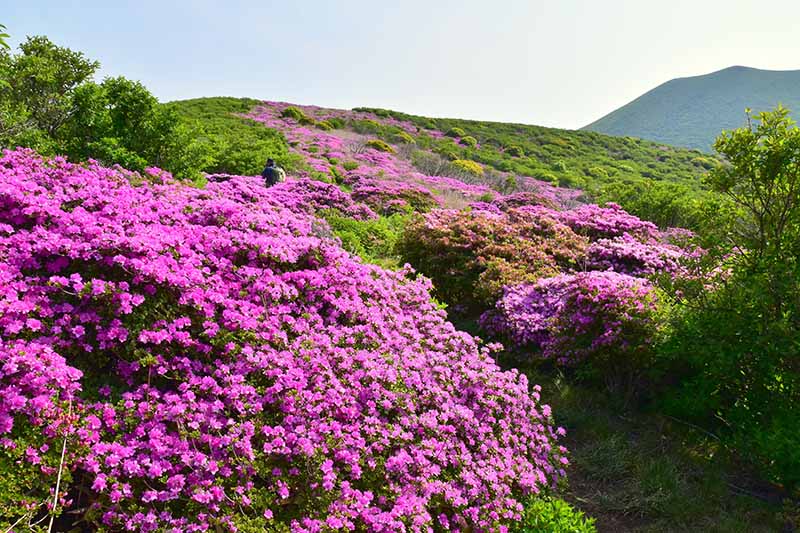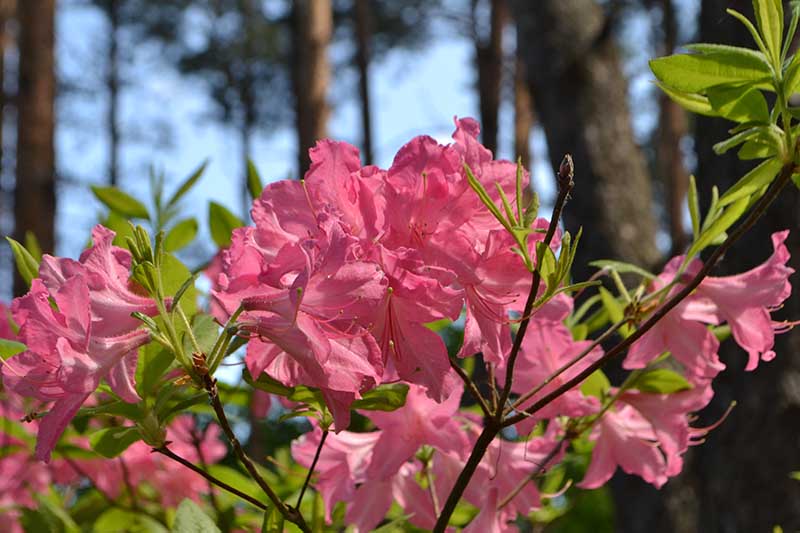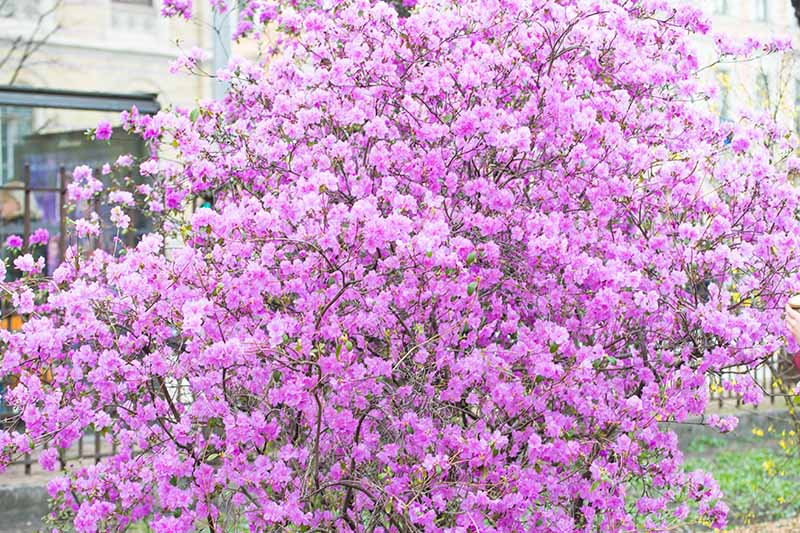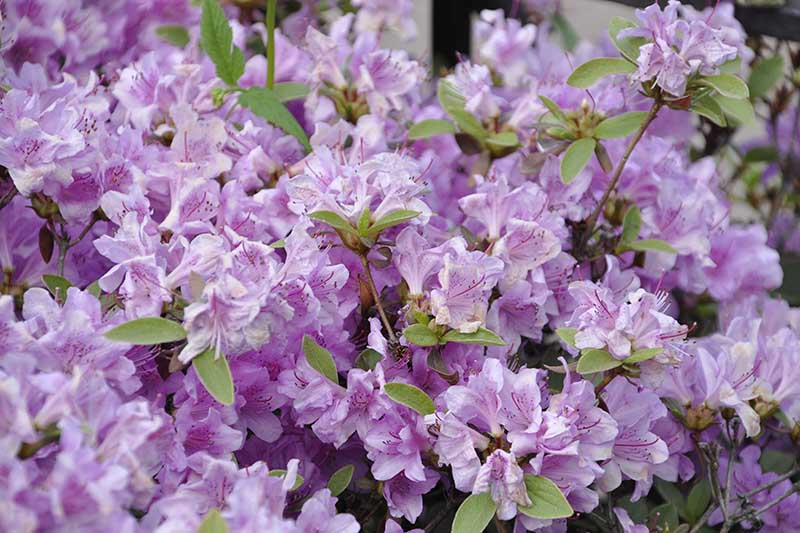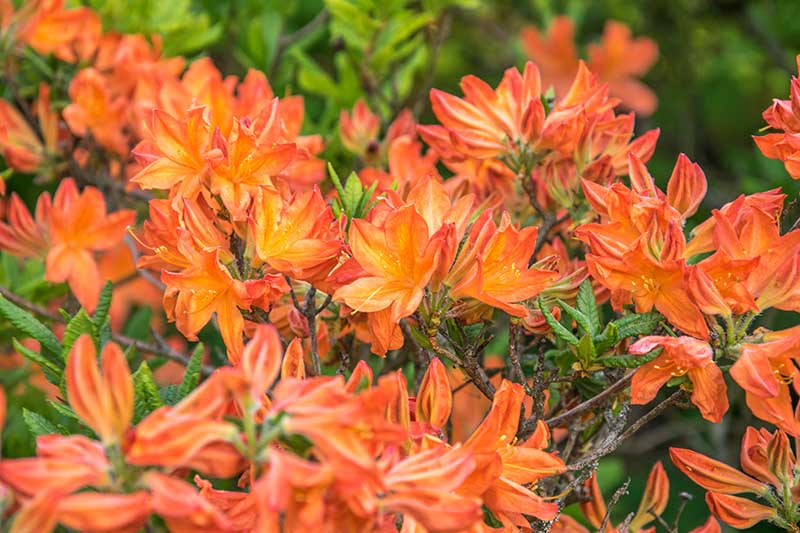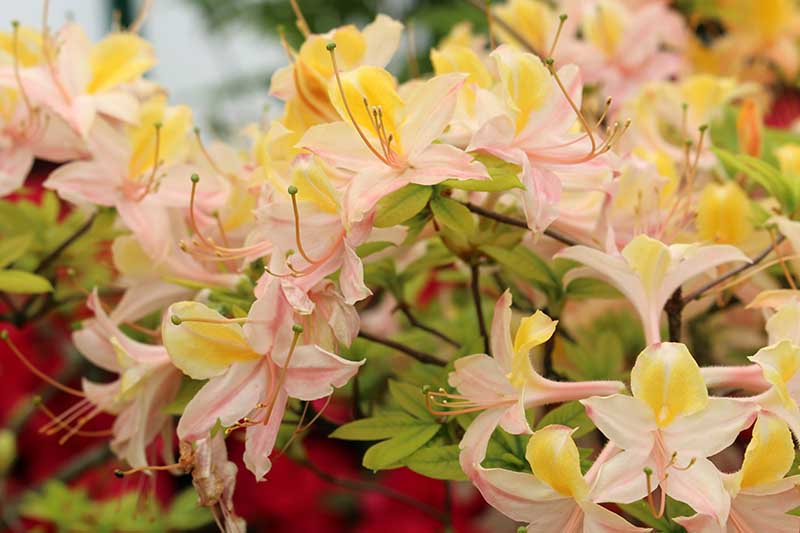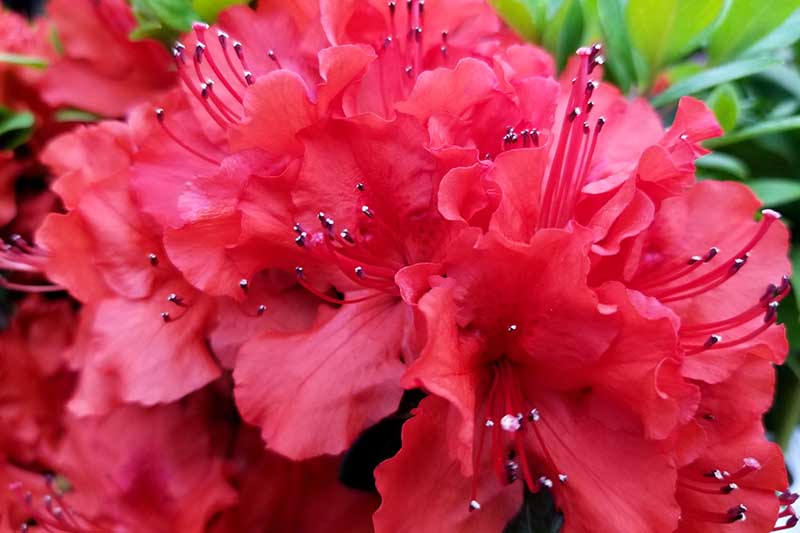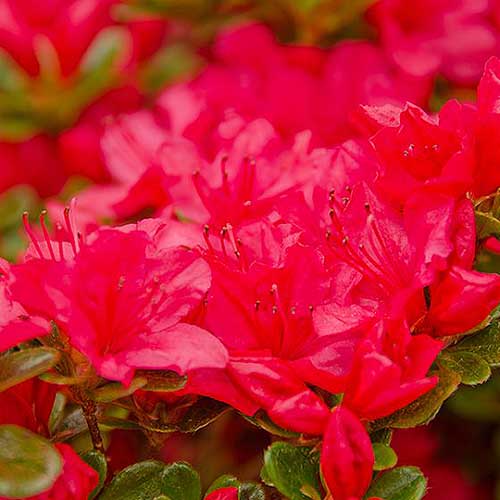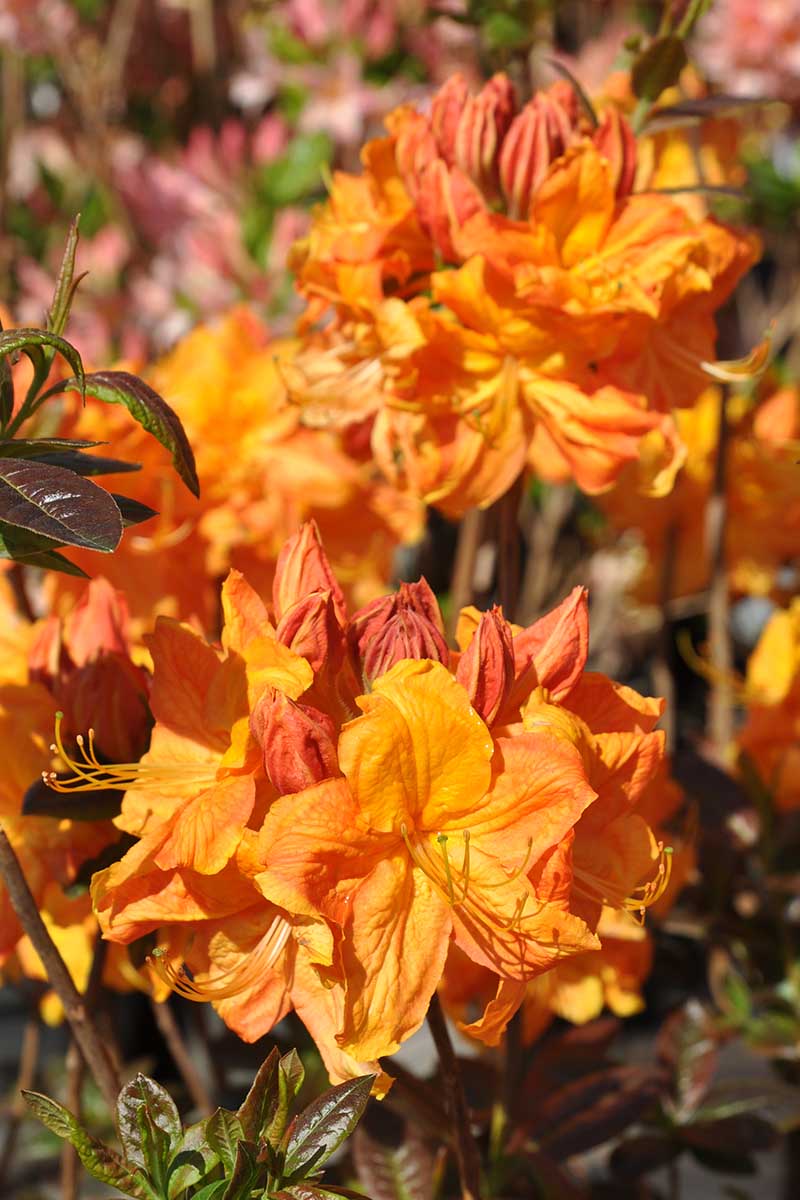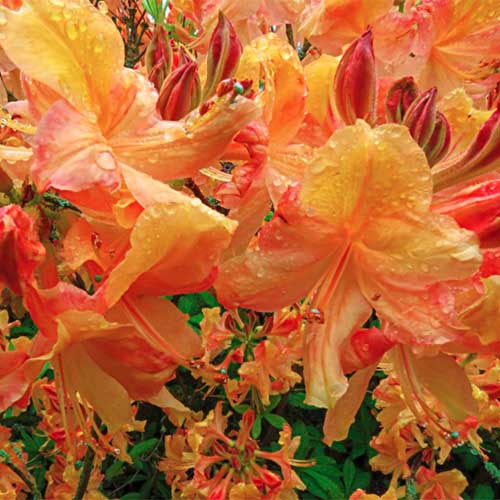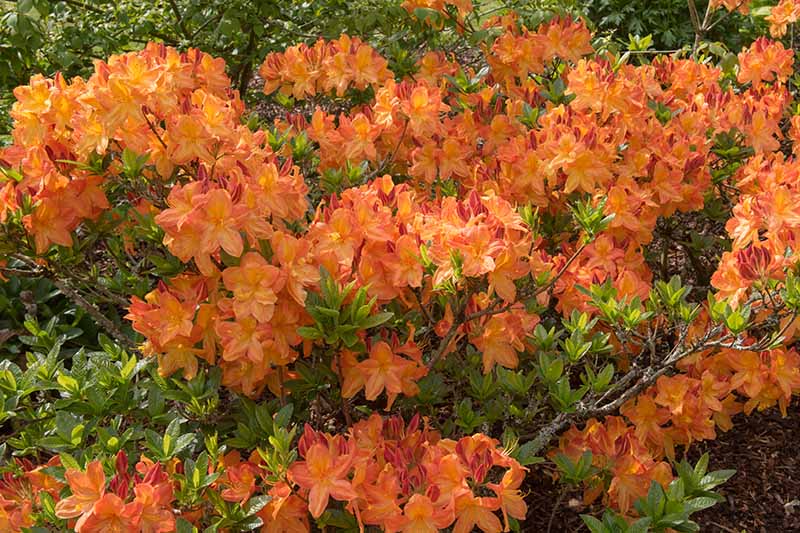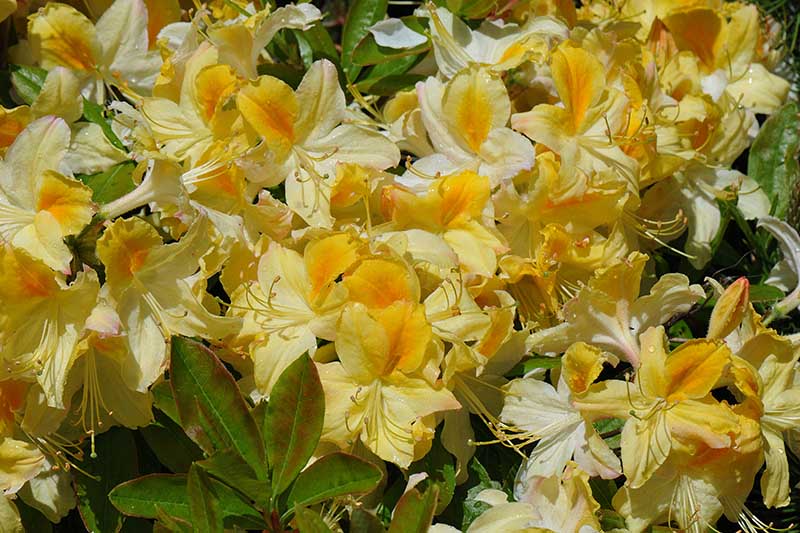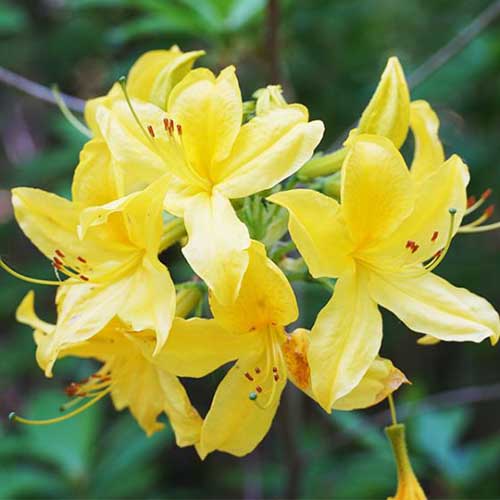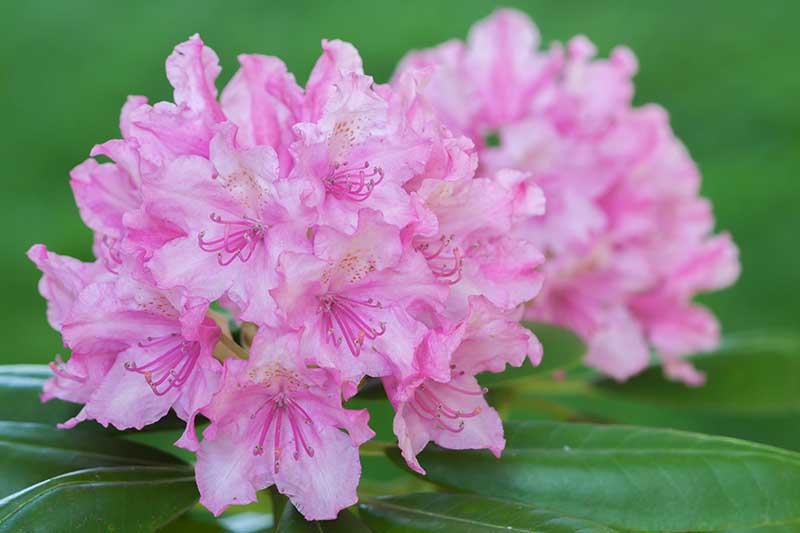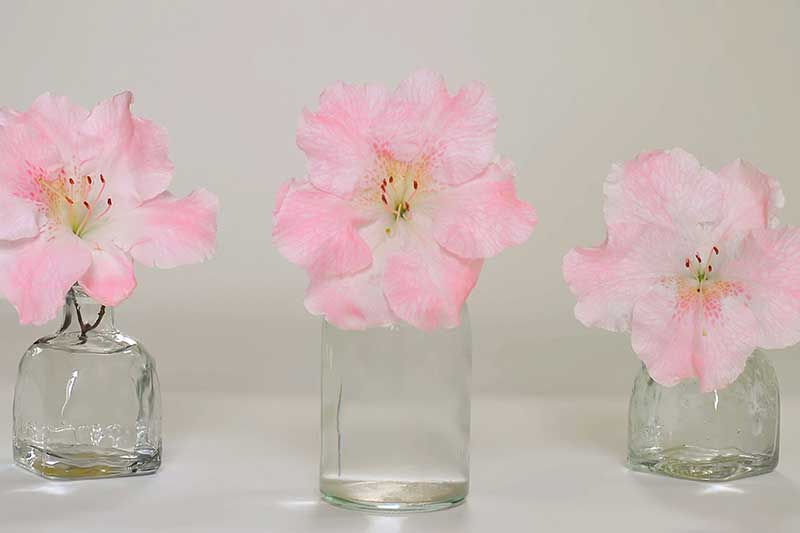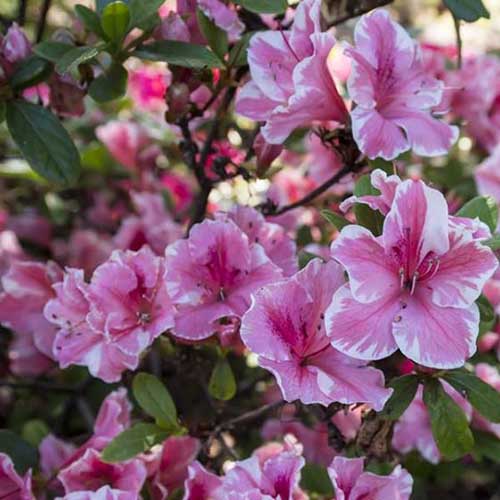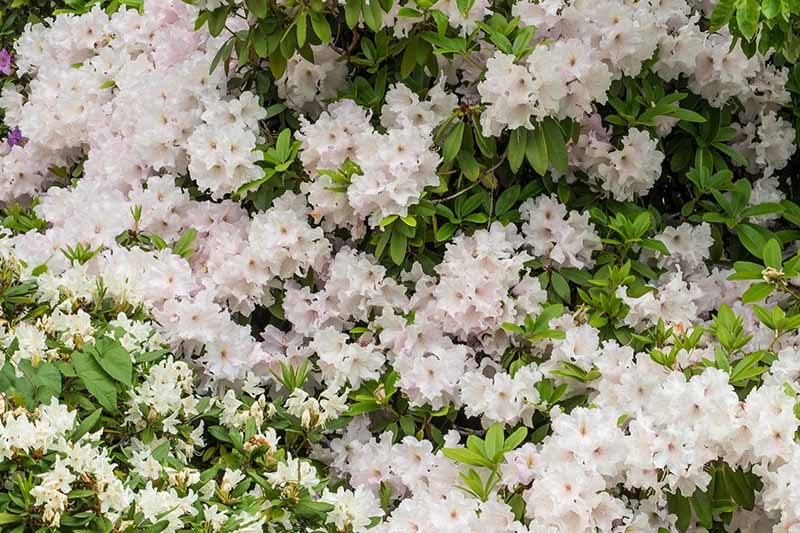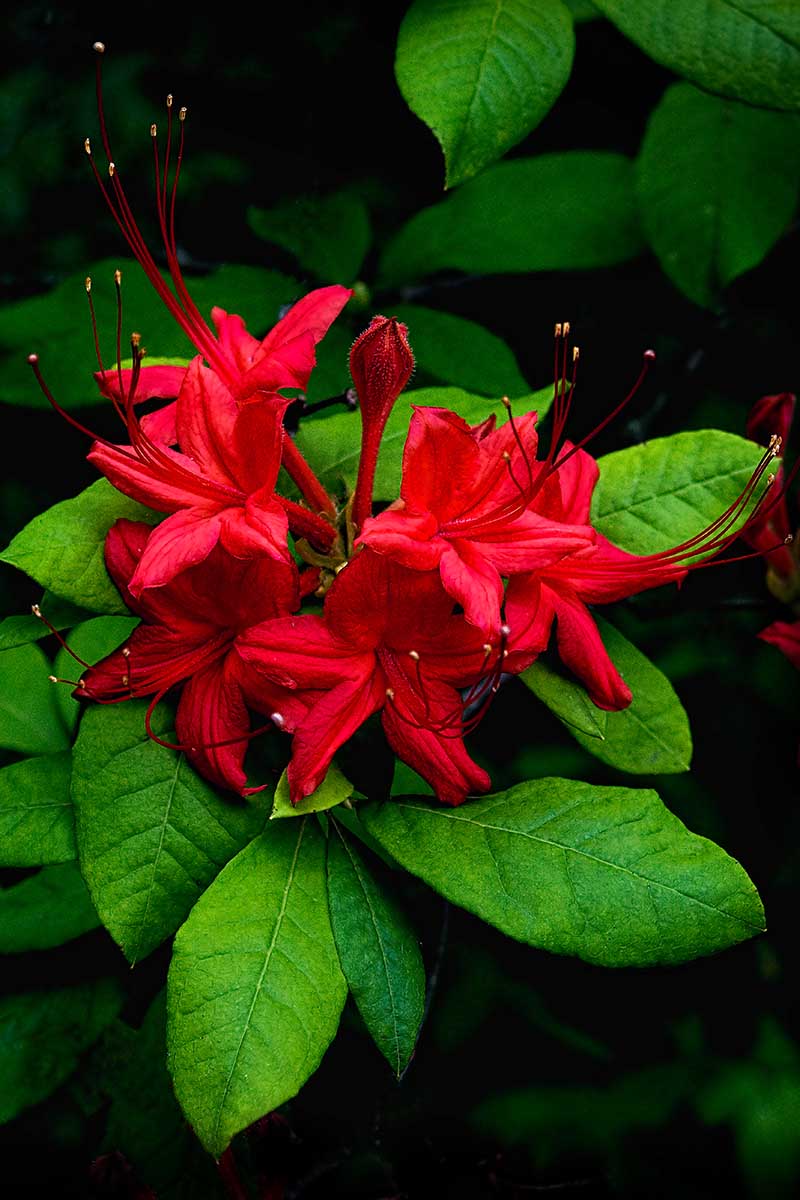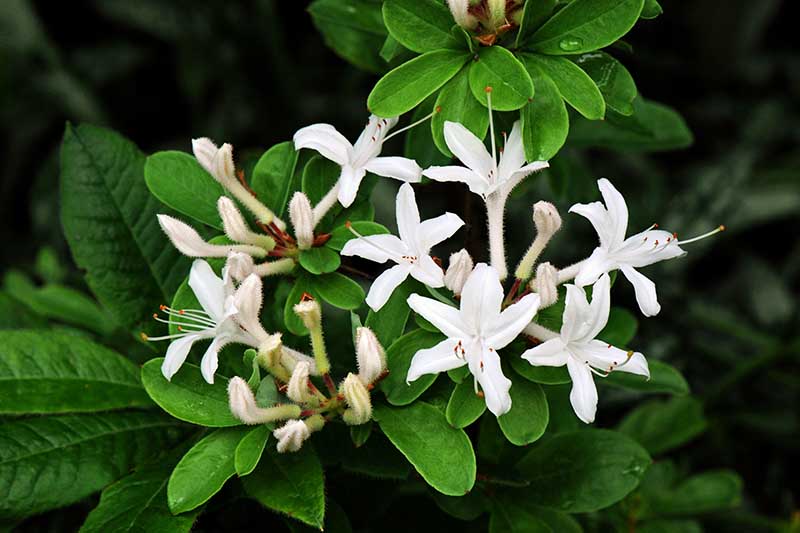Reliable, vivid colors, masses of blooms, and easy-care maintenance make them a favorite among flowering shrubs. While most folks tend to think of azaleas as spring flowering, there are many types that bloom in summer and fall as well. And that means, with a little planning and a bit of space, you can enjoy their spectacular floral displays for months at a stretch, rather than just a few weeks per year. We link to vendors to help you find relevant products. If you buy from one of our links, we may earn a commission. This guide doesn’t serve as a complete catalog of the available types, but you’ll find a good selection of established performers that could make a handsome addition to your garden! Here’s what’s ahead: What You’ll Learn Azalea Groupings Flowering Groups Plant Selection and Hardiness Species and Cultivars Early Season Species Early Season Cultivars Mid-Season Species Mid-Season Cultivars Late Season Species Late Season Hybrids An Azalea for (Almost) Every Season
Azalea Groupings
In the large world of azaleas, plants are grouped according to a wide range of characteristics. This includes deciduous or evergreen plants, native species or introduced hybrids, flower forms, and growth habits. And native North American species can also be placed in color groups of white, pink, and orange-to-red. Many cultivars are also grouped into series and are often named for the original plant breeder or the breeding location – such as PJM for the Boston breeder Peter John Mezitt, or Ghent for the hybrids from Ghent, Belgium. The flowering groups give us the info we need for planning a continuous floral display.
Flowering Groups
Bloom times are divided into three flowering groups of early, mid, and late or fall flowering varieties. The early group starts to flower in late winter to early spring, roughly from February to April. Midseason is comprised of late spring and early summer, or May and June. And the late or fall group flowers from midsummer and into fall, or mid-July to October. Also, there are a few hybrid series bred specifically for reblooming. These beauties flower in spring, then again in midsummer to fall! There are no hard and fast rules about the aforementioned dates for the three flowering groups, and many plants will overlap at the edges of two time frames. It should also be noted that bloom times can vary by a few to several weeks, depending on the weather. Azalea flowers open when the weather’s right, not because of the length of daylight hours. Early or mild spring temperatures mean earlier flowers, while a late or cool spring can delay them. And of course, flowers appear earlier in regions with mild or warm winters and later in those with colder ones. Also, when plants receive winter temperatures of 50°F or below for four to eight weeks, the following spring buds burst into flower all at once. If they don’t receive this cool period, blooming is more staggered and a touch less dramatic. However, the staggered opening nicely extends the bloom time as well. Keep these variables in mind when planning for a prolonged flowering season!
Plant Selection and Hardiness
Because azalea hardiness ratings can vary significantly, it’s important to check that plants are suitable for your region. When you buy locally, garden centers typically carry stock appropriate for your region. But if you buy online, this isn’t always the case. Be sure to check that the plants you select are suitable for your growing conditions. Also, azaleas are well-suited to potting. This means you can push the edge of their cold hardiness a bit with container grown plants – provided they can be overwintered in a protected spot. Winter protection can include a thick mulch over the roots, a sheltered spot out of the wind, and perhaps a porous cover in extreme cold. For more info on this topic, check out our article on how to grow and care for azaleas in containers. To plan a handsome display that provides interesting structure and attractive fall colors as well as flowers, choose a selection of species plants and cultivated hybrids. And read about some of the top picks in our roundup of 21 of the best azaleas for your garden and yard.
Species and Cultivars
In the home garden, the most popular plants are the evergreen cultivars, with their masses of bright flowers and year-round green foliage. There are literally thousands to choose from. However, the less common deciduous species and their cultivars shouldn’t be overlooked – they provide charming flowers, lovely fragrances, and fine fall colors. All 17 of the North American species are deciduous, and many make excellent landscape plants. Several are used for breeding purposes as well. Indigenous species such as Rhododendron calendulaceum, R. canadense, R. perclymenoides, R. prinophyllum, and R. viscosum are among the parentage of well-known cultivar series such as Ghent, Knap Hill-Exbury, and Northern Lights™.
Early Season Species
The following species and their cultivars provide early season interest.
R. atlanticum
Also known as the Atlantic, coastal, or dwarf azalea, R. atlanticum is native to the eastern coastal plain from Delaware to Georgia. A small, compact shrub that flowers in April and May, the white flowers are often tinged with pink and have a musky floral scent. This species is hardy in Zones 6-9. The Made in the Shade series includes R. atlanticum cultivars such as ‘My Mary’ and ‘Rosy Cheeks.’
R. austrinum
Native to Florida and Georgia, common names include Florida flame or the honeysuckle, orange, or Southern yellow azalea. R. austrinum is a large deciduous shrub with fiery and fragrant orange or yellow flowers that bloom in early March to mid-April. Plants are hardy in Zones 6-10. The Aromi series offers a cross of select Exbury hybrids with R. austrinum.
R. canescens
Also called mountain or Piedmont azalea, or Florida pinkster, R. canescens is native to the southeastern US. A large deciduous shrub with delicate, fragrant flowers of pink to peach, flower buds open from mid-March to the end of April, and plants are hardy in Zones 5-9. ‘Varnadoe’s Apricot,’ ‘Varnadoe’s Snow White,’ and ‘Snowbird’ are R. canescens hybrids.
R. flammeum (syn. R. speciosum)
The Oconee azalea, R. flammeum, is indigenous to the Piedmont region of Georgia and South Carolina. This is a large heat and humidity tolerant deciduous-to-evergreen native with vibrant flowers of amber yellow, peachy orange, or flame red. Flowers open in early April and shrubs are hardy in Zones 6-7. ‘Choptank Rose’ and ‘Varnado’s Salmon’ are examples of R. flammeum hybrids.
R. perclymenoides (syn. R. nudiflorum)
Commonly called pinxterbloom, R. perclymenoides is also native to the southeastern US. A midsized deciduous species, it features clusters of lightly fragrant lavender, soft pink, or white flowers that open from April to May. This species is hardy in Zones 4-9. The Ghent hybrids, such as ‘Gloria Mundi’ and ‘Coccinea Specios,’ began with a cross of R. perclymenoides.
R. vaseyi
Also known as pinkshell, R. vaseyi is a fragrant evergreen to semi-evergreen species native only to the Blue Ridge Mountains of North Carolina. A midsize to large shrub, the showy, shell pink to white flowers open in early April to May and plants provide excellent fall color. Hardy in Zones 4-8. Different from most azaleas, R. vaseyi does not hybridize with other species.
Early Season Cultivars
There are numerous early season cultivars and series. Here’s a selection of some of the most enduring and popular examples.
Bloom-A-Thon
A reblooming series introduced by Proven Winners, Bloom-A-Thon® are small to midsize evergreen shrubs. They first flower in April and May, then produce a steady second wave of blooms from midsummer through fall. Flowers come in vivid shades of lavender, pink, red, and white. Hardy in Zones 7-9.
Encore
Bred in Alabama, the compact evergreen Encore® plants are from another reblooming series. ‘Hot Pink’ You can find Bloom-A-Thon® ‘Hot Pink’ in quart containers at Nature Hills Nursery. They flower from late March to mid-May and repeat bloom for several months from midsummer through fall. Hardy in Zones 6 or 7 through 10, depending on the cultivar, flowers come in a wide range of pinks, purples, reds, white, and bicolors.
Glenn Dale
Bred in Glenn Dale, Maryland, these midsized evergreens produce flowers in gorgeous shades of bright crimson, magenta, mauve, pink, and salmon. ‘Autumn Embers’ You can find ‘Autumn Embers’ in #3 containers available at Nature Hills Nursery. Hardy in Zones 6-8, ‘Glenn Dale’ provides a long season of blooms from April to June. ‘Allure,’ ‘Dayspring,’ and ‘Jubilant’ are a few popular cultivars.
Kurume
These compact evergreen hybrids from Japan are prized for their masses of flowers that open from mid-March to mid-April. Flower colors include magenta, mauve, pink, purple, red, and white. Hardy in Zones 7-8.
ReBloom
A compact, reblooming evergreen series from Seneca, North Carolina, ReBloom™ hybrids produce flowers in coral, fuchsia, pink, purple, red, or white. ‘Hino Crimson’ You can pick up ‘Hino Crimson’ in #1 or #3 containers at Nature Hills Nursery. They flower in late March and April, produce a light midsummer flush, and give a good final showing in late summer and fall. Hardy in Zones 6-9. ‘Blush Elegance,’ ‘Purple Spectacular,’ and ‘Red Magnificence’ are ReBloom™ hybrids.
Mid-Season Species
Several deciduous and a few evergreen species make good landscape plants for midseason selection.
R. alabamense
The Alabama azalea, R. alabamense, is a low to midsized deciduous shrub native to Alabama, Georgia, and North Carolina. The snowy white flowers may have a lemon yellow splash on their upper petals and emit a pleasant, lemony-spicy scent. Blooms open in mid-April to May and plants are hardy in Zones 7-8. ‘Addison,’ ‘Coleman’s Early Yellow,’ and ‘Coleman’s Sunshine’ are crosses of R. alabamense.
R. calendulaceum
Known commonly as the flame azalea, R. calendulaceum is a large deciduous shrub native to the Appalachian Mountains from Pennsylvania to Georgia. The showy, sometimes fragrant flower clusters in vibrant shades of pumpkin orange, bright scarlet, or golden yellow bloom from mid-April through May. Hardy in Zones 5-9. R. calendulaceum is used as a parent in several hybrids including the Ghent and Knap Hill series.
R. canadense
A small deciduous species known commonly as Canada rosebay or rhodora, R. canadense is native to northeastern North America. The sparkling flowers of mauve or white bloom from late April into June and are hardy in Zones 2-8. ‘Lilac Lights’ and ‘Orchid Lights’ are two R. canadense hybrids.
R. cumberlandense (R. bakeri)
The Cumberland azalea, R. cumberlandense, is a low-growing deciduous species with vibrant flowers in shades of melon orange, peach, and crimson that blooms in June and July. It’s hardy in Zones 5-8. ‘Gold Lightning’ is an R. cumberlandense hybrid cross.
R. indicum
Commonly called the Satsuki or southern indica azalea, R. indicum is a small, compact evergreen Japanese shrub with rose pink flowers tinged with purple – but cultivars have also been bred to produce a variety of colors. Large trusses of blooms open in June and July, and plants are hardy in Zones 7-8. Popular cultivars include ‘Flame Creeper,’ ‘Gumpo,’ and ‘Wakebisu.’
R. kiusianum
The Kyushu evergreen azalea is a compact, low-growing Japanese species with masses of flowers in shades of lilac, pink, purple, rose, or white. Plants flower in May and June, and are hardy in Zones 6-9. R. kiusianum is one of the parents of the Kurume hybrid series.
R. occidentale
The California, Pacific, or western azalea, R. occidentale is a mid to large-sized shrub indigenous to the West Coast, and it has the largest flowers of the native North American species. Large clusters of white to light pink flowers with a sweetly spicy fragrance bloom from late May into August. Hardy in Zones 7-9. R. occidentale is a parent to many cultivars and hybrids including the well-known Knap Hill-Exbury series.
R. prinophyllum
Known as the early or roseshell azalea, R. prinophyllum is native to northeastern North America. A midsized shrub with lovely rose pink blooms and an intense, spicy scent of cinnamon and cloves, flowers open in April and May. Hardy in Zones 3-8. R. prinophyllum is one of the parents of the cold hardy Northern Lights hybrids.
R. schlippenbachii
The royal azalea, R. schlippenbachii, is a midsized deciduous Korean species with a delicate fragrance and soft pink flowers that open in April and May. The bronzed leaves also provide superb fall color in bright shades of orange, red, and yellow. Hardy in Zones 4-8. ‘Sid’s Royal Pink’ is an R. schlippenbachii hybrid.
R. yedoense
The Yodogawa azalea, R. yedoense, is a low to medium evergreen or semi-evergreen shrub native to Korea. The lavender to rose-purple flowers bloom in April and May, and the foliage takes on orangey-red tones in winter. Hardy in Zones 4-9. ‘Poukhanense’ is a well-known cultivar of R. yedoense.
Mid-Season Cultivars
The following cultivar series offer handsome midseason displays.
Aromi
Developed in Mobile, Alabama to add fragrance and heat tolerance to Exbury hybrids, the deciduous Aromis are crossed with native species such as R. austrinum and flower from late April into May. Beautiful blooms show in shades of orange, pink, white, and yellow and have a spicy to sweet fragrance. Hardy in Zones 6-9. A good choice for hot, humid regions, ‘Katherine Alison,’ ‘Amelia Rose,’ and ‘Sunrise’ are three of the available cultivars.
Ghent
First bred in Belgium almost 200 years ago, Ghent hybrids are a cross of R. luteum and American species such as R. calendulaceum and R. periclymenoides. The flowers come in luminous shades of orange, pink, red, white, and yellow and have a light, sweet scent. They bloom in April and May. Hardy in Zones 5-8. ‘Daviesi,’ ‘Magic,’ and ‘Narcissiflora’ are Ghent cultivars.
Girard
Midsized and bushy, Girard hybrids began in Geneva, Ohio, and have a complex lineage that include R. kaempheri and Knap Hill cultivars. Large flowers bloom in bright shades of fuchsia, mauve, pink, red, salmon, and white. These are evergreens, but the foliage often turns bright red to maroon in cold temperatures. Hardy in Zones 6-7.
Knap Hill Hybrids
The Knap Hill azaleas include the Exbury series and these are exceptional English hybrids. ‘Crimson’ You can find ‘Crimson’ plants available in #1 containers from Nature Hills Nursery. Midsized deciduous shrubs, they produce large clusters of flower heads in brilliant shades of gold, orange, pink, red, white, and yellow as well as pastels. Plants flower in mid-April to June and are hardy in Zones 5-8.
Mollis
The Mollis series began in Belgium and these are derived mainly from crossing R. molle and R. japonicum with American species such as R. viscosum. ‘Klondyke’ You can find ‘Klondyke’ available from Spring Hills Nursery via Home Depot. They produce large clusters of flowers in striking variations of orange, pink, red, white, and yellow in late May and June. Hardy in Zones 5-8. ‘Anthony Koster,’ ‘Arneson Gem,’ and ‘Christopher Wren’ are all Mollis cultivars.
Northern Lights
Bred for the cold at the University of Minnesota, the Northern Lights™ series is comprised of midsized deciduous shrubs that flower in late April to June. Hardy in Zones 3 or 4 through 9, flowers come in beautiful shades of gold, lavender, orange, pink, rose, salmon, white, and yellow.
PJM
PJMs hail from Boston, Massachusetts, and are low to midsized hybrids bred from R. carolinianum and R. dauricum var. sempervirens. ‘Lemon Lights’ You can find ‘Lemon Lights’ plants in #3 containers available from Nature Hills Nursery. Popular for their cold hardiness and masses of pretty flowers in hues of mauve, pink, and rose, the foliage of these evergreens takes on an attractive maroon tint in winter. Hardy in Zones 5-7. ‘Elite,’ ‘Midnight Ruby,’ and ‘Victor’ are common PJMs.
Robin Hill
From Wycoff, New Jersey, Robin Hill azaleas are low to midsized evergreen shrubs that first flower from mid-May through June, then rebloom from late summer through fall. Flower colors are mainly pastel shades of orange, pink, scarlet, and white. Hardy in Zones 6-9.
Late Season Species
The following species add late season interest. ‘Conversation Piece’ You can find ‘Conversation Piece’ plants in #3 containers available at Nature Hills Nursery.
R. arborescens
Also known as the sweet or smooth azalea, R. arborescens is a midsized deciduous plant native to the eastern US. Clusters of sweetly fragrant white or pink-blushed blossoms flower from late May through July, and the foliage turns shades of burgundy, crimson, and orange in autumn. Hardy in Zones 4-8. ‘Dynamite and Hot Ginger’ and ‘Summer Parasol’ are cultivars of R. arborescens.
R. occidentale
Listed in the mid-season group, the western Azalea belongs to the late group as well, and flowers from late spring into mid-August.
R. prunifolium
Native to areas along the Georgia/Alabama border, R. prunifolium is a mid to large-sized deciduous species also known as the plumleaf azalea. Flower colors include oranges, reds, and yellow and are among the latest to bloom, flowering in July and August. Hardy in Zones 5-9. R. prunifolium is used by many breeders to extend the flowering season – ‘Cherry Bomb,’ ‘Sweet September,’ and ‘Pennsylvania’ are a few hybrids.
R. viscosum
The swamp azalea, R. viscosum, has a wide distribution from Maine to Florida and west into Texas. Prized for its deep fragrance of musk and cloves, flowers are white to light pink and bloom from mid-May to August – and the foliage gives excellent fall colors of orange to maroon. Hardy in Zones 4-9. The first North American species to be named and collected, way back in 1680, R. viscosum was an early parent in English breeding programs. ‘Delaware Blue,’ ‘Lemon Drop,’ and ‘Summer Eyelet’ are some of today’s R. viscosum hybrids.
Late Season Hybrids
For late season hybrids, the reblooming series offer a second steady wave of flowers that open from mid to late summer, and continue through autumn until heavy frosts set in. The Bloom-A-Thon®, Encore®, ReBloom™, and Robin Hill series mentioned in the Early Flowering Hybrids section above also give reliable late season performance. Flowers typically begin to open in mid to late July and increase nicely once cooler temperatures arrive in early fall. With a bit of planning, and enough room, you can enjoy the fantastic colors of your favorite shrubs right through the growing season – from early spring until the frost arrives. Plan your bloom times from the different flowering groups and mix species plants with cultivars for an appealing floral display that adds fragrance, lovely fall colors, and interesting structure as well. How do you folks use azaleas in your garden? Let us know in the comments below! And for more ideas on how to grow azaleas in your landscape, read these articles next.
Beautiful Blooms: Add Azaleas to the GardenHow to Propagate Azaleas for Gorgeous New ShrubsHow to Grow and Care for Florist’s Azaleas Indoors

